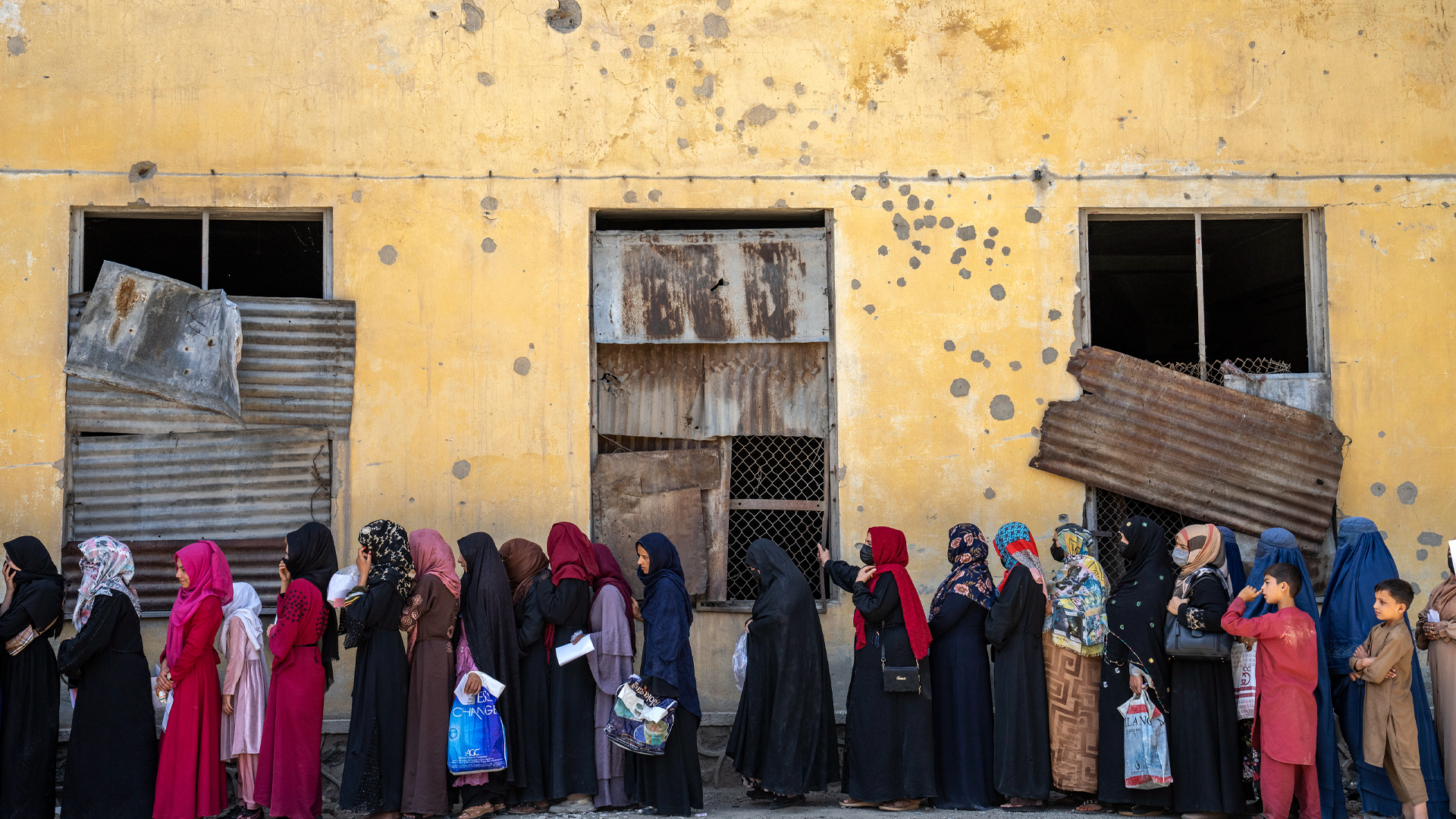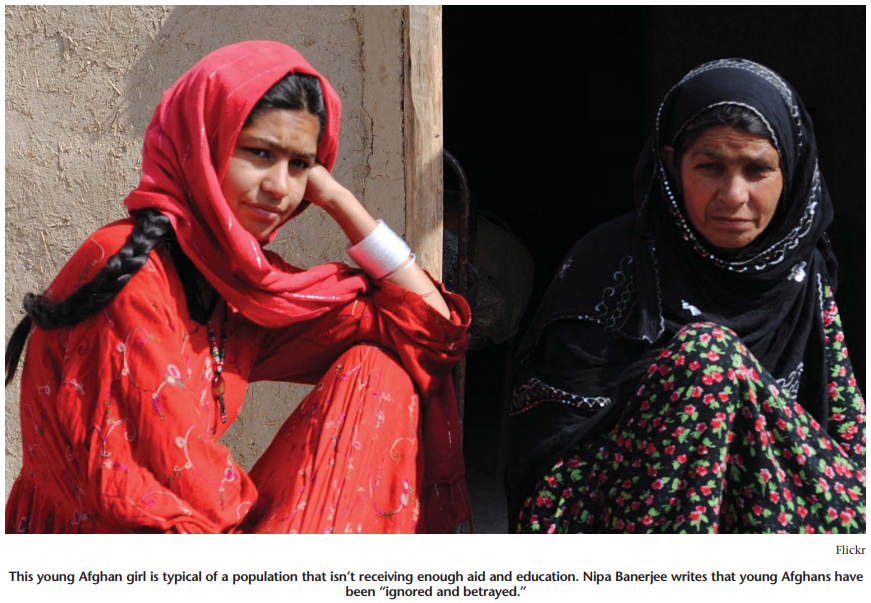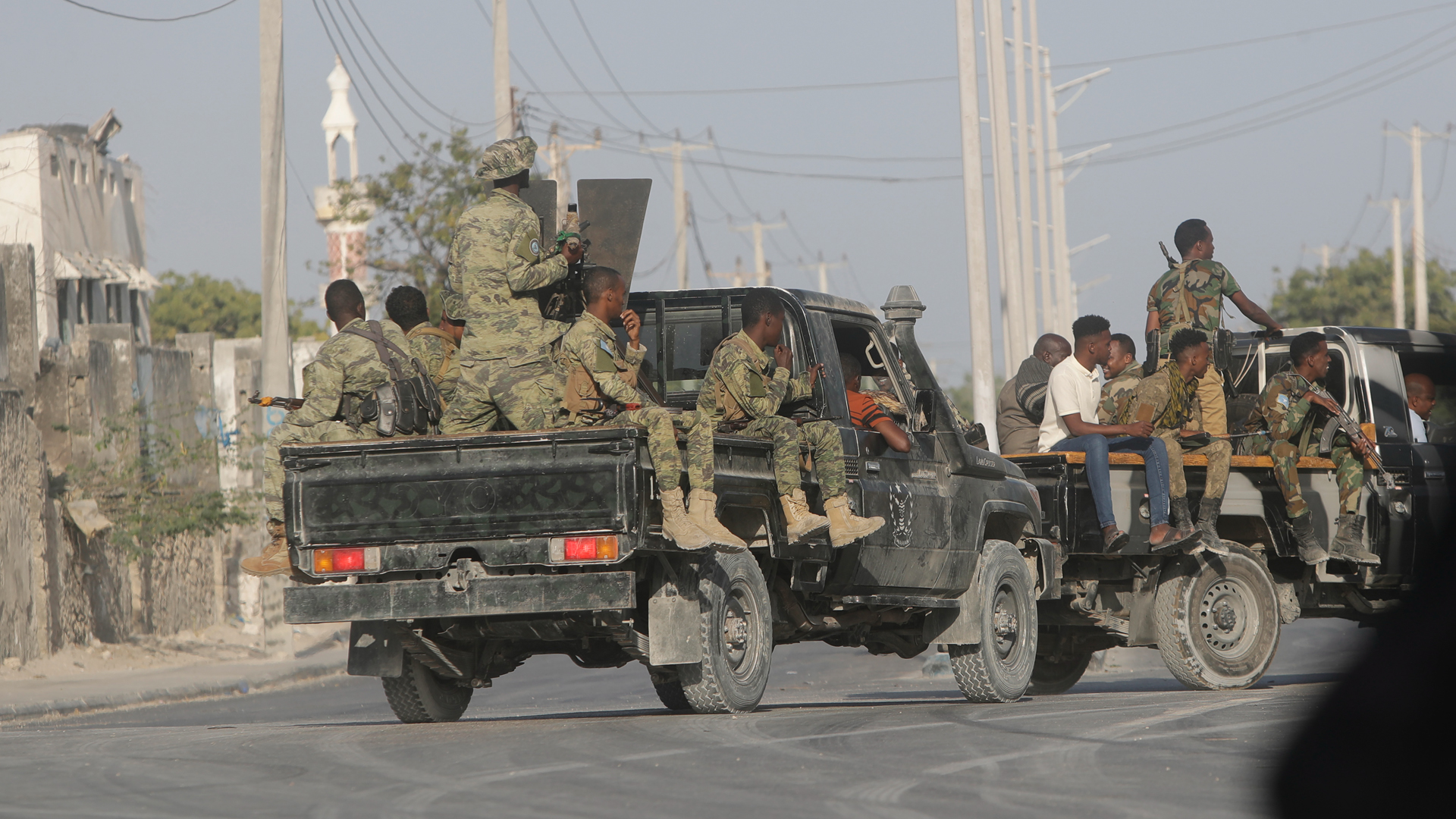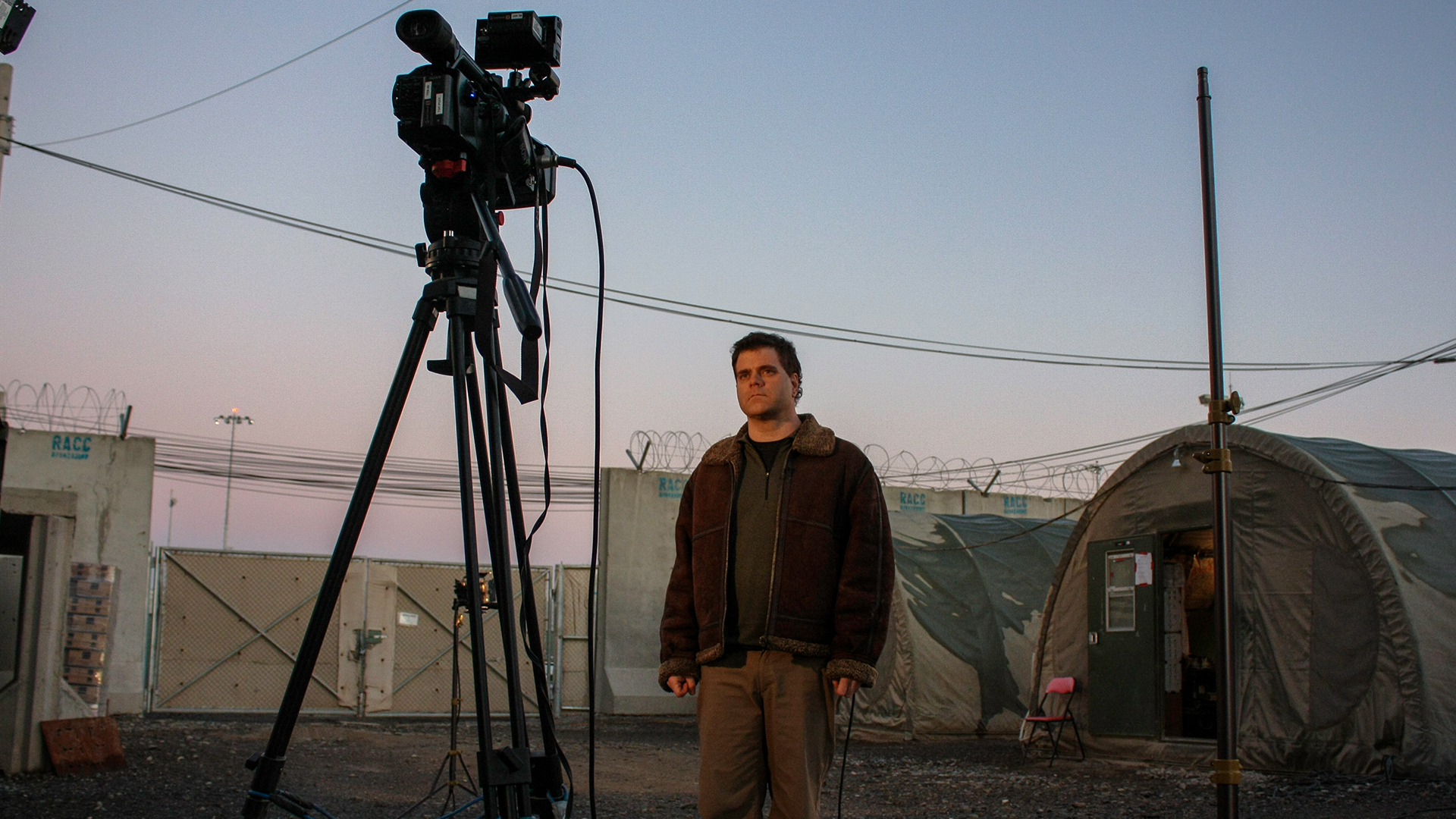
I board a plane from Frankfurt, bound for Dubai on one of my innumerable trips to Afghanistan. I muse about my journey over the years in the land of the “Kabuliwallahs,” the fruit and nut traders I used to watch with immense curiosity in my childhood days in Kolkata (Calcutta) in India. As a child I knew the Kabuliwallahs to be visitors from the distant terrains of a mysterious land that was framed by the majestic jagged Hindukush mountain ranges. I wonder — is the land any less mysterious to me today?
I am brought back to reality by the friendly voice of an American introducing himself as Bob. He is heading for Iraq, a civilian working in a US-supported project. During the course of our conversation I ask him if the security situation in Iraq has improved with the gradual withdrawal of the US troops, secretly hoping that he will say yes, so that my dreams for betterment of security in Afghanistan would heighten. He crushes my hopes with an instant response — not at all; it has worsened for foreigners, who are a hated lot, but he keeps returning because the job in Iraq gives him his daily bread. But he says that he would not go to Afghanistan, even for money. He says I must be a courageous (and, he probably thinks, rather nutty) woman, travelling to Afghanistan with no protection, no security, no insurance. I assure him that bad luck can hit a person anywhere — in the streets of Ottawa, New York or Kabul.
Sitting beside us is a member of the Canadian national swim team going to Dubai for a championship event. Overhearing our conversation, he intervenes and says that the Canadian government has kept the public in the dark about the situation in Afghanistan — what is Canada doing in a place that is steeped in sky-high corruption, where women’s ears and noses are cut off and acid is thrown in the faces of girls going to school? A loud laugh from the American — do you believe our governments care about these issues?
The WikiLeaks revealed the discrepancy between what diplomats really feel or know about Afghanistan and the messages they deliver to their publics. No transparent message about the state of affairs in Afghanistan has ever been delivered to the tax-paying public by governments. Governments deliberately maintain a rosy public picture of progress in Afghanistan when, in reality, the situation is quite grim and governance extremely weak. Nor has the international community undertaken much transparent dialogue with the Afghan government about the need for better attention to governance and the rule of law, which should be at the base of any accountable and stable government.
I am not certain how much our government cared. But I know that I did and so did many other colleagues of mine, both Canadian and Afghan. But it is difficult to keep caring in the flagrant absence of care in the management of the “engagement” in Afghanistan by the authorities of both the international community and Afghanistan itself. The young, educated Afghans — Pashtuns, Tajiks and Hazaras — those who never saw foreign soil and others of Afghan descent born abroad — who held high hopes and were ready to help their leaders to build a nation in 2001, have been ignored and betrayed. I meet them every day — young people in a quandary — they just cannot get out. They want a strong self-sustaining nation, while the country’s Western mentors hype the notion that with its divided tribal loyalties Afghanistan could never be a nation with strong institutions.
A bewildering maze of training programs in Afghanistan has had little results when it comes to institution building. As an instance, a civilian police force has not been developed yet. The recent record of the abusive performance by the south Sudanese police trained by Canadians is only one example that raises questions about the wisdom of assigning the task of police training to Westerners, who appear ineffective in building new civil institutions in war-torn countries where access to justice and protection of civil rights have not been practised for decades.
Serious doubts remain whether the Afghan armed forces will be ready to take over full responsibility from the international troops in 2014. Development of a huge army is also considered fiscally unsustainable, because Afghanistan will not be able to pay more than a fraction of the costs of its own security forces for years. The World Bank estimates Afghanistan’s GDP at $12 billion, while the US alone spends $113 billion annually in Afghanistan.
The plane descends to Kabul. A surprise — a counter for females only, which is a novelty in Afghanistan! Pushing aside feminist principles, I dash for the female counter to get the stamp of immigration. Special privilege given to females was short lived, however. This counter disappeared within three weeks, presumably based on the argument that gender (male and female) equality demands that women should not be given extra advantages.
As I ride through the dusty streets of Kabul, children run up to the side of the road — amazingly beautiful but malnourished children, with unwashed clothing and faces and shocking vacant looks — their glazed eyes tell a tale of poverty stealing their childhood. At that moment flashes in my mind the expensive restaurants of Kabul, where the exclusive crowd of expatriates dines on French croissants, fried brie cheese and foie gras…
The WikiLeaks revealed the discrepancy between what diplomats really feel or know about Afghanistan and the messages they deliver to their publics. No transparent message about the state of affairs in Afghanistan has ever been delivered to the tax-paying public by governments. Governments deliberately maintain a rosy public picture of progress in Afghanistan when, in reality, the situation is quite grim and governance extremely weak.
My car passes with the spiralling dust covering the little faces of the children. I think again — I’ve made this journey several times over the last seven years, why am I so disconcerted this time? Superficially, conditions have hardly changed since the first time I arrived, wide-eyed and hopeful, in 2003. But there must have been a decline over the years, perhaps imperceptible slides downward, until the hard realities have hit harder this time. The reality is that there is no visible progress. It is documented by research that the livelihoods of dozens of household across rural Afghanistan surveyed in 2003-04 had deteriorated by 2008-09 When research teams revisited these families they found the majority worse off than before, with many struggling to meet even the most basic of day-today needs.
Accountability is lacking for billions invested in the country. The Special Inspector General for Afghanistan Reconstruction (SIGAR) and other evaluations discovered that hundreds of structures across the country have been poorly constructed or never completed at all. While billions of dollars are flowing into the country, the lives of the poor have not improved. Forty-two percent of the people live below the poverty line, earning less than a dollar a day. A Kabul University professor’s research apparently brings the figure of absolute poverty to above 80 percent, which has not yet been vetted by the Afghan government. Strangely enough, in a country where the unemployment rate is close to 40 percent, hundreds of men (with no knowledge of any local language) are imported from Nepal to guard the compounds of the international organizations. The little kids I left on the roadside are those who have had the good fortune to not die before the age of five. They will never see a classroom. Many of the girls will be illegally married by the time they are 12, and some will die in labour as their yet undeveloped wombs struggle to deliver babies. The boys will be without jobs and give in to the Taliban’s enticement, to perhaps finish their lives as suicide bombers while in their teens.
How much of the billions of dollars of aid is benefiting these street children, or their parents? The government officials deny corruption, saying that Transparency International’s ranking is based on “perception” and there is no real “evidence” of corruption. The evidence of waste and mismanagement, on which corruption grows, is glaring when I cannot get a clear answer to the question of how much income has been generated by the microcredit dispensed to the poor.
In Kabul, I visited a microcredit client — a woman. By her own account, she had sent the credit she received to her son, who was jobless in Iran. How was she going to pay back the loan, I asked. She said that her family income was good enough to repay the loan. I leave it to readers to conjecture how the “poor” benefit from such microcredit. Admittedly, this was a random interview arranged by the microfinance institution of which the woman I saw was a client. One may say this is anecdotal. But how many anecdotes of this nature would count as “evidence”?
Developmentally, microfinance is an instrument of poverty reduction. But does it serve the purpose in practice? Several queries to determine the value for money of billions disbursed as microcredit produced no response, as no record of income generated (if any) is available. The mismanagement of the microfinance institutions and the complacency of the donors are both to be blamed for such failures.
Similar problems are noted in the in education sector — with hundreds of schools built, little information is available on enrolment, as even Canada’s Afghanistan Task Force admits. In its report to Congress, the Special Inspector General for Afghanistan Reconstruction said it was increasingly concerned that the reconstruction effort in Afghanistan was impeded by lack of accountability and oversight, inadequate metrics and attention paid to the sustainability of projects, and insufficient Afghan institution-building.
As I arrive in Kabul city centre, the city is buzzing with WikiLeaks — some Afghan civil servants find the leaks about their own ministers amusing, while high-ranking officials accused of making unseemly comments about the Afghan president are busy calling press conferences to issue denials, while the rumour mill runs a hundred miles an hour. As in Canada, those rumours wane with time, and new rumours take over.
The most recent and devastating news released by journalist Dexter Filkins on the collapse of the Kabul Bank, which involves some high-level Afghan officials, has gripped the city. The International Monetary Fund (IMF) has painted a grim picture of the Afghan government’s handling of the Kabul bank crisis, which could lead to the fund ending its Afghan support program. Aid from many donor countries and agencies depends on an IMF program being in place. In fact, panic has set in in the government because the donors have issued a warning that without an IMF program, development funds will stop. Afghan officials agree that the Kabul bank crisis was caused by poor management but exacerbated by an “erroneous” audit by accounting firm Price Water House Coopers and “ineffective” international technical support. The latter is an not an unusual or erroneous assessment for most technical assessment programs, which have resulted in failure of institution building, the most important ingredient for transition to the withdrawal of foreigners and assumption of full leadership by Afghans.
What other news is buzzing? Afghans and their leadership are wary of US general David Petraeus’s support for the Afghan Local Police program (ALP), which could fuel conflicts and empower militia commanders like those who ravaged Afghanistan during the civil war period of 1990.
Immediately following the US troop surge, a better sense of security had prevailed in Kabul. But it was shortlived, and there were several incidents with high casualty rates. Afghans do not believe US president Barack Obama’s assurance that that there are fewer areas under Taliban control and that more Afghans have the chance to build hopeful futures. The year 2010 was the bloodiest year of the decade, says Robert Watkins, the outgoing deputy special representative of the Secretary General at the United Nations Assistance Mission in Afghanistan in Kabul. More than 2,700 civilians were killed in 2010 — up 15 percent from the year before. The UN blames the Taliban and other insurgents (and less NATO) for the rise in civilian deaths. But whether inflicted by NATO or the Taliban, the pain of the those grieving at the loss of family members is no less, although the reaction to the recent accidental killing of nine boys by American forces shows that the deaths of Afghans at foreign hands resonates deeply, and provokes even greater outrage than killings by the Taliban.
Afghan people believe that due to the international community’s strategy of aid focused in the provinces where their troops are located, insecurity has spread to the more secure provinces, especially in the north, and created political fissures. The recent optimistic assessment of advances in the war from General Petraeus is not widely shared by Afghans, who know that violence rose to its highest levels last year. Predictions are that 2011 will be even worse. To the coalition, the Afghan government remains dangerously ineffective, and the Pakistan sanctuary for the Taliban’s leadership is still secure. No wonder that in the absence of any signal of abatement in insecurity, Afghans are frustrated. Afghans believe that aid allocated to Afghanistan is spent with little local input.
Based on my own experience of living and working in Afghanistan from 2003 to 2006, I can confirm that back then some of the southern states, the Pashtun heartlands, were accessible to foreigners like me, who could travel in these areas without armored cars and guards and without head covers. This is unthinkable today. Some of the northern provinces, which were almost completely free of Taliban violence up to 2005-06, are currently under serious Taliban threat. On January 23 of this year, Reuters said the insurgent violence was at its worst since 2001.
President Hamid Karzai’s recent call for the phase-out of the Provincial Reconstruction Teams (PRTs) has grabbed Afghans’ attention. The PRTs were to serve as the civil military coordination mechanism. However, PRT operations have never been well coordinated. Educated Afghans believe that PRTs have subordinated humanitarian and development programming interests to the political interests of foreigners, and that the reconstruction programs are being undertaken mainly to win the hearts and minds of the Afghans for the foreign troops. Research shows that Afghans perceive that there is little evidence of aid projects reducing conflict and violence or having other significant counter-insurgency benefits. The PRTs wrongly overestimated the value of reconstruction programming to win hearts and minds instead of defending security for Afghans, leading the Afghan people to conclude that PRTs are largely irrelevant for Afghan security. The impact of PRTs on security and reconstruction is rather disappointing, without accruing benefits to the Afghans. The main utilitarian value of PRTs has been to sustain international political engagement.
The concentration of development investment in the PRT provinces has had little impact on institution building or increasing the legitimacy of the Afghan state, even at the provincial level, because they have created parallel structures for the delivery of development, bypassing the Afghan government and undermining its programs. Strengthening governance in the provinces has been neglected. The Afghans feel that even if the right number of army and police are trained, and made fit to fight the insurgency within the next four years (which they doubt), Afghanistan’s poor governance capacity will make peace and security unsustainable.
For development, the Afghanistan National Development Strategy (ANDS-2008), written by foreign experts, never quite took off. The strategy was not based on broad consultations and has yet to be translated into any Afghan language. The sector results strategies, developed belatedly, were never translated into action, were never monitored and continue to report on mundane activities without a focus on results. Members of the international community hardly demanded delivery on ANDS as they kept busy designing mechanisms and delivering programs parallel to those of the ANDS, virtually undermining the Afghan government programs.
Little lessons were learned from the ANDS episode. For the London and Kabul conferences of 2010, the Afghan government identified 22 national priority programs (NPPs). The planning, development and implementation of 22 national programs for a government with low capacity is unrealistic at best. In the absence of adequate capacity in the government, one would expect the donors, who endorsed the Kabul plans, to provide help in developing programs. But no firm commitments have yet been procured. Half a year after the Kabul conference, the possibility that the NPPs will be designed and planned in a timely fashion is waning.
At the Kabul conference, the Afghan government picked up the American notion of “hundred days actions,” a benchmark normally used for evaluating the early success of an American president. But can the hundred days after the Kabul conference be compared with the hundred days after a president’s entry into the White House? Are the development situations and demands the same? Afghanistan requires basic services (concrete results) to be delivered to the people, who are stricken with poverty, ill health, ignorance and violence. Therefore, after the Kabul conference the concrete delivery of services to address such deficiencies should have been the benchmark for reporting on 100 days, or a year after. Actions taken with snail-paced movements toward the start of planning for the NPPs, without a concrete results-oriented approach do not count. Following the US symbol, reams of papers are being produced to narrate 100 days’ and 300′ days actions after the Kabul conference, the narratives providing little confidence that any bankable and fundable programs will be developed soon. Currently, there is nothing concrete except broad concepts. Forgotten is the fact that even if security were perfect, people need minimum service delivery — how and through whom such delivery will take place is not yet known.
The feeling of unity and trust has broken over the decade. Young educated Afghans, including the middle and rank-and-file civil servants, who wanted to embrace democracy, feel betrayed and disenfranchised by the flawed elections; minority groups and women feel left behind with an exclusive reconciliation process; and the spirit of national unity is ripping apart at the seams.
But there is no dearth of discussions in the various so-called coordination groups — working groups, standing committees, cluster committees, and joint coordination and monitoring boards. An Afghan friend of deputy minister rank made me roar with laughter when she described in satirical tones the discussions and decisions taken in the various committees.
The project she related is one that impacts the lives of people — men, women and children — in a poor area, where an unfinished irrigation canal left a ditch in the middle of the road. With melted snow, rain and mud, the ditch, about six feet deep, was dangerous in the unlit street. Men, women and children were accidentally falling into the ditch, dying. A working group was formed to find a solution. The working group suggested that an ambulance be placed on the side of the ditch for 24 hours so that anyone falling into the ditch could be lifted and taken to a hospital 50 kilometres away. The proposal was not palatable to the technical committee, which considered that the full-time placement of an ambulance with a driver was not cost-beneficial.
A better proposal would be to build a hospital right beside the ditch so that people falling into the ditch could be immediately treated at the hospital. However, the highest-level project-approval committee considered the cost of the land and hospital construction to be exorbitant and offered a better proposal — digging a new ditch by the side of the hospital 50 kilometres away. A large donor member of this committee, with a lot of undisbursed funds, had an innovative proposal — to buy a large tract of fallow land around the existing ditch and turn it into a graveyard with tomb stones. When people fell in the ditch and died, they could be buried right away with tombstones placed on their graves. The proposal was accepted by the majority. That was three years ago. The ditch is still there, deepening, and people continue to fall into it and die. Bargaining continues for the cost of the land for the graveyard.
As she was relating this symbolic story, her office was freezing. The wall was adorned with a fancy air conditioner, with heating and cooling facility. But it was turned off. Being a spoiled Canadian, used to central heating, I requested that she turn it on. She said that the unit was in reality a technical assistant. Curious, I asked about the significance of the simile. She explained that the “machine is visible and fixed on the wall but it does not produce like most of our technical assistants.” To date, over $2 billion has been invested in technical assistance programs.
What has been of most concern to me during this trip, however, is the lack of common goals and interests that Afghans should share with their leaders and the international community. The feeling of unity and trust has broken over the decade. Young educated Afghans, including the middle and rank-and-file civil servants, who wanted to embrace democracy, feel betrayed and disenfranchised by the flawed elections; minority groups and women feel left behind with an exclusive reconciliation process; and the spirit of national unity is ripping apart at the seams.
Photo: Shutterstock








